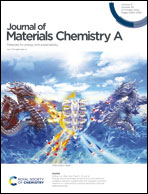Redox-induced thermocells for low-grade heat harvesting: mechanism, progress, and their applications
Abstract
The evolutionary success of heat recovery technology plays an important role in global sustainable energy solutions. Low-grade heat (below 200 °C) from solar radiation, industry, and the human body is usually discarded without any recovery effort. The ever-increasing energy crisis has motivated the development of high-performance thermoelectric generators to recover this low-grade heat. Compared to solid-state thermoelectric devices, the newly emerged redox-induced thermocells based on ion transport have provided another cheap, flexible, and scalable way for directly converting thermal energy into electrical energy. Therefore, we provide a comprehensive description of this emerging and promising system in this review. First, the background and underlying fundamentals are provided. The subsequent sections summarize the process regarding their electrolytes, electrode materials, and separators. Thereafter, cell configuration, integrated devices, and their applications such as power supply, temperature sensing, heat removal and recovery, and photothermal seawater desalination are emphasized. Finally, we highlight the future challenges and opportunities for high-performance redox-induced thermocells.



 Please wait while we load your content...
Please wait while we load your content...